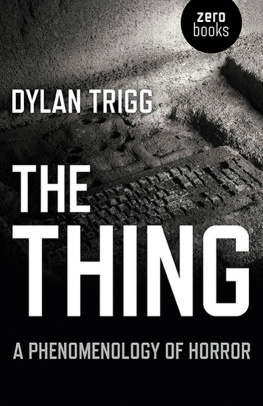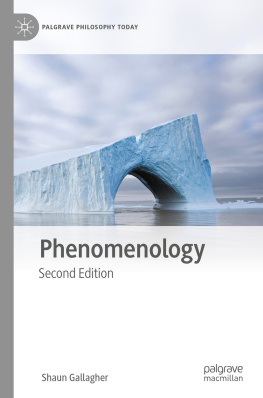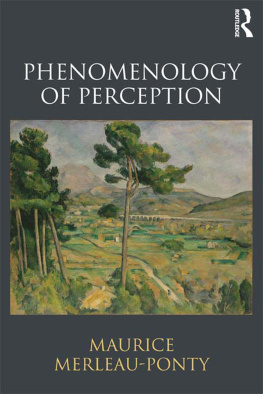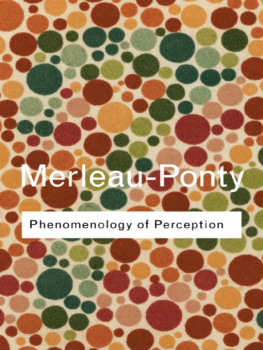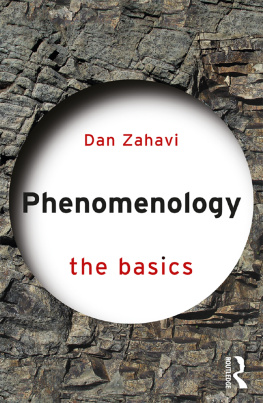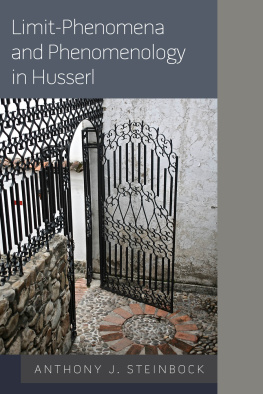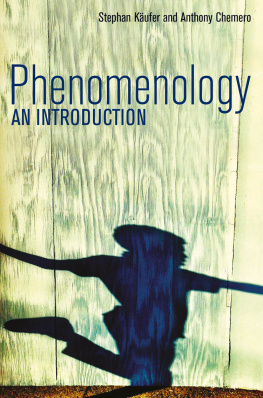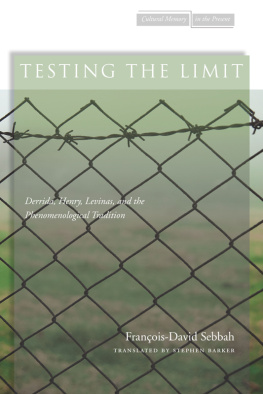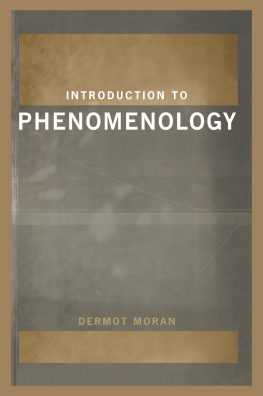First published by Zero Books, 2014
Zero Books is an imprint of John Hunt Publishing Ltd., Laurel House, Station Approach,
Alresford, Hants, SO24 9JH, UK
www.johnhuntpublishing.com
www.zero-books.net
For distributor details and how to order please visit the Ordering section on our website.
Text copyright: Dylan Trigg 2013
ISBN: 978 1 78279 077 8
All rights reserved. Except for brief quotations in critical articles or reviews, no part of this book may be reproduced in any manner without prior written permission from the publishers.
The rights of Dylan Trigg as author have been asserted in accordance with the Copyright, Designs and Patents Act 1988.
A CIP catalogue record for this book is available from the British Library.
Design: Stuart Davies
Printed and bound by CPI Group (UK) Ltd, Croydon, CR0 4YY
We operate a distinctive and ethical publishing philosophy in all areas of our business, from our global network of authors to production and worldwide distribution.
It must not be supposed that atoms of every sort can be linked in every variety of combination. If that were so, you would see monsters coming into being everywhere. Hybrid growths of man and beast would arise. Lofty branches would spread here and there from a living body. Limbs of land-beast and sea-beast would often be conjoined. Chimeras breathing flame from hideous jaws would be reared by nature throughout the all-generating earth.
Lucretius, On the Nature of the Universe.
Preface
Before Life
A vast, sepulchral universe of unbroken midnight gloom and perpetual arctic frigidity, through which will roll dark, cold suns with their hordes of dead, frozen planets, on which will lie the dust of those unhappy mortals who will have perished as their dominant stars faded from their skies. Such is the depressing picture of a future too remote for calculation.
H. P. Lovecraft, Clusters and Nebulae.
A planet in the solar system. Dwarfed by darkness, the planet emits a distress signal in the form of an evolutionary accident termed life. On this green and blue orb, a slow terraformation of the alien landscape will begin. Deep ravines cut into the surface of the planet, a boundless ocean now separated by continents, on which cities and forests intertwine. Beings will colonise the minuscule unit of space in the cosmos, transforming the planet into a habitable world. From nowhere, further generations of living animals will come into existence. There, they will establish a base on the interstellar ark; both cultivating the land and fortifying themselves with built structures they will term homes. Here, they will dwell with the assurance that the planet they have found themselves on is both their origin and their future.
An event will occur in the future that will bring about the planets slow extinction. Ten thousand years will pass, and a new ice age will begin. In the arid deserts of the planet, glaciers will begin their slow, creeping advance. In time, the oceans will themselves become frozen landscapes, linking hitherto isolated countries. Cites that once housed millions of people will become deserted, and the lights that illuminated the planet will flicker erratically in the darkness of night, before slowly but irretrievably being consigned to total blackness. Of the few who refuse to depart from the planet, they will remain as scavengers of a lost world. With the seasons colonized by the unrelenting cold, farming and all other modes of sustenance vanish. There, the fragments of a population that remain will establish a new territory in the ancient forests that have become their new homes.
Time will proceed, and the ice will withdraw. In its place, the planets sun will undergo its own entropic decline, annihilating whatever animal life remains on the surface of the planet and forcing any residual life to seek exile in the depths of the oceans. As for the rest of the planet, much of it will be covered by dunes, interspersed with dried rocks and endless horizons of empty sand. Up above, the blue sky that shrouded the planet in times long gone will be filled with unrelenting thunderstorms and hailstorms. Over a longer expanse of time, the oceans that remain will evaporate, leaving immense basins of dried salt where the swelling of blue water once existed. The place from which life slowly emerged onto the surface of the planet will cease to be, finally dissolving the bonds between life and non-life, and thereby reducing all matter to an undulating terrain, in which everything and nothing exists. Everything that exists, has existed, and will exist no longer bears any trace of its presence.
* * *
For too long philosophy has laboured under the assumption that post-humanism, in all its variations, offers us the only escape route from a legacy of anthropomorphism. Part of this thinking is legitimate. In the vision of an uninhabitable world, overrun with ruins and feral vegetation, an entire landscape opens, full of the possibilities of another philosophy. After humanity, so the thought proceeds, the world will go on without us, thus reinforcing the fundamental contingency of our existence as a particular species of life.
This tragic realization becomes the site of a new philosophy. Whereas the old philosophy found it impossible to envision the world in a non-sensuous and non-subjective way, indeed going so far as to align this non-subjective world with nave realism, the new philosophy openly asserts the validity of realism and equally contests any form of antirealism.
Opposed to the post-Kantian tradition (and for that matter any philosophy that would emphasize the irreducible centrality of the subject), the new philosophy takes as its point of departure the world outside of the subject. Into the wilderness of thought, objects that hitherto seemed to constitute an innocuous background to our lives becomes enchanted with a weird aura. Indeed, the very term weird becomes the site of a critical revaluation of existing norms, in which the gaze of human subjectivity loses its privileged place.
Against this horizon of speculation, the phenomenological tradition, once a beacon of integrity, has become emblematic of a failure in thought to think outside of the subject. Instead, the method purportedly reduces the world of things to an anthropomorphised world, enclosed at all times with an unbreakable alliance between subject and world, best exemplified in the Heideggerian phrase, being-in-the-world.
In the shadow, not only of phenomenology, but also linguistic idealism and post-structuralism, a call has been made to a post-human ontology, which delivers us from this obsolete legacy of thinking the world in terms of how it can be accessed for us, and us alone. Into this vision, the promise of a philosophy that replaces subjects with objects finds its inspiration in the image of a world without us. Aesthetically, the vision merely reinforces what the new philosophy knew all along: that human beings are not and never were at the centre of things. To be sure, humanity persists through this thinking, but only now is rendered ontologically equal to any other object, be it a carved table or the red rain in Kerala. Thus, if humans and the world still exist in a relation with one another, then the relation is no more special than that between a forest and the night.
Today, this promise of a philosophy that replaces subjects with objects has long since folded back upon itself, becoming a distinctly humanalas, all too humanvision fixed at all times on the perennial question:

